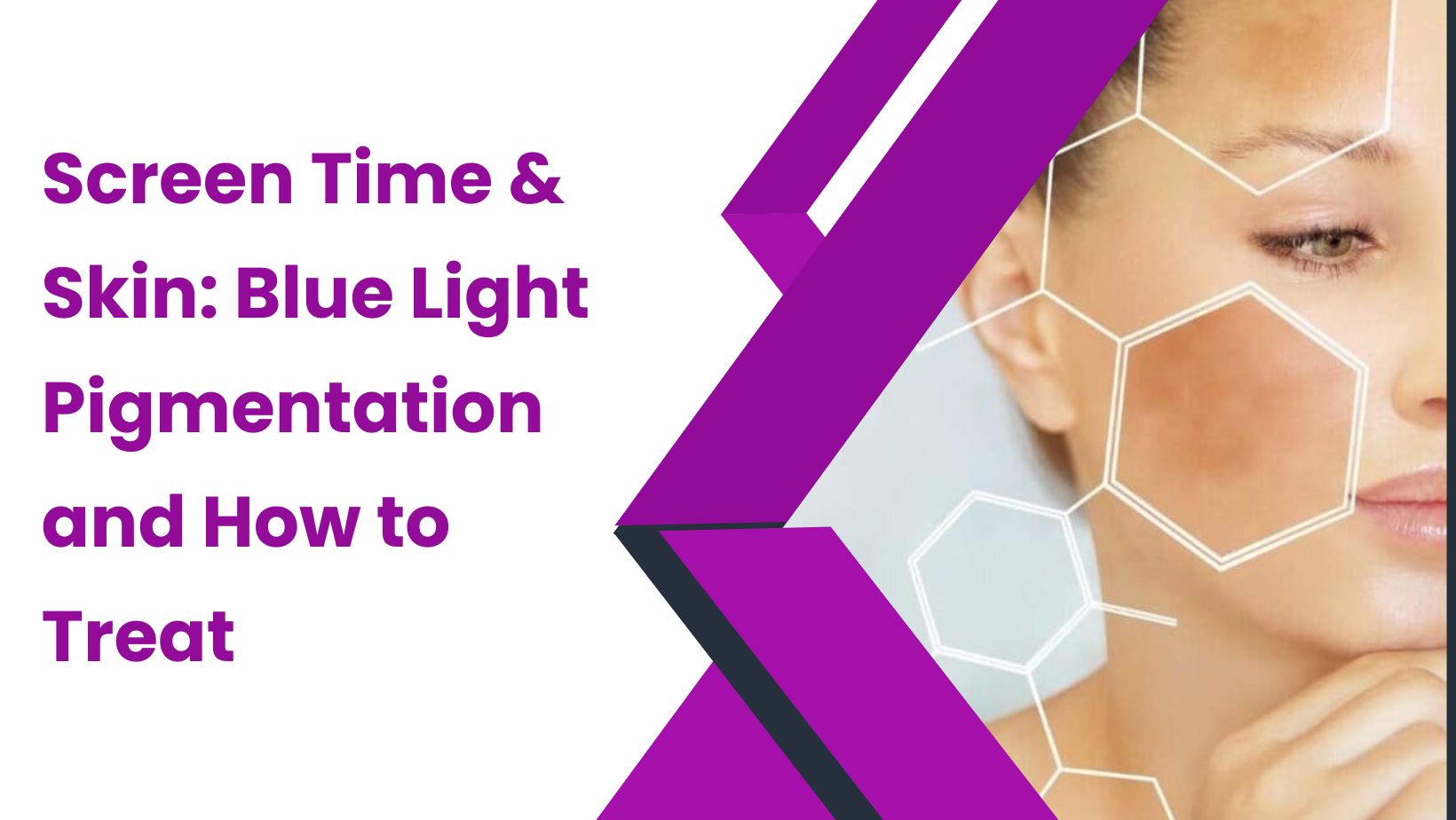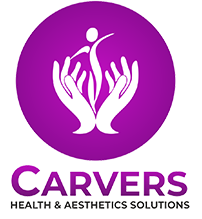
Screen Time & Skin: Blue Light Pigmentation and How to Treat
In today’s digital world, our screens have become unavoidable. Whether it’s smartphones, laptops, or TVs, we spend hours each day in front of them. But did you know that constant screen exposure may be impacting your skin? Research shows that blue light emitted from screens can cause pigmentation, premature aging, and dullness. Let’s explore how blue light affects your skin, why it leads to pigmentation, and the best ways to treat and prevent it.
The Hidden Impact of Blue Light on Skin
Blue light, also known as High Energy Visible (HEV) light, penetrates deeper into the skin compared to UV rays. While UV rays damage the outer layer, blue light can reach the deeper layers and trigger oxidative stress. This stress leads to free radical formation, which breaks down collagen and elastin — the building blocks of youthful skin.
Over time, this exposure can result in:
- Uneven pigmentation
- Increased melasma
- Fine lines and wrinkles
- Dull, tired-looking skin
What makes blue light damage more concerning is that it’s not limited to outdoor exposure — even a few hours of daily screen time indoors can accelerate skin issues.
Why Blue Light Causes Pigmentation
Pigmentation happens when melanin production in the skin increases. Blue light stimulates the melanocytes (pigment-producing cells) more aggressively than even UVA and UVB rays. This overstimulation can result in:
- Hyperpigmentation: Dark patches or uneven skin tone.
- Worsening of melasma: A common condition in women, especially during or after pregnancy.
- Post-inflammatory pigmentation: Dark spots that linger after acne or skin irritation.
Unlike sunburn, the effects of blue light are gradual and often go unnoticed until the pigmentation becomes more visible. This makes prevention and early treatment crucial.
Effective Treatments and Prevention Strategies
Thankfully, there are several ways to protect your skin from blue light damage and reverse pigmentation:
1. Skincare Solutions
- Antioxidants: Vitamin C, niacinamide, and resveratrol help fight free radicals.
- Mineral Sunscreens: Sunscreens with zinc oxide or titanium dioxide act as shields against blue light.
- Hydrating Serums: Hyaluronic acid keeps skin plump and less prone to oxidative stress.
2. Professional Treatments
- HydraFacial: Deeply cleanses and hydrates while infusing antioxidants to fight damage.
- Chemical Peels: Help reduce pigmentation and renew skin cells.
- Pico Laser Treatments: Target stubborn dark spots and improve skin tone.
3. Lifestyle Adjustments
- Reduce unnecessary screen time.
- Apply blue light filters on devices.
- Maintain a diet rich in antioxidants (berries, nuts, leafy greens).
Conclusion
Blue light pigmentation is a modern-day skin concern that needs awareness and timely care. By protecting your skin with the right products, adopting healthier screen habits, and seeking professional treatments, you can minimize its impact and maintain glowing, youthful skin.
At Carvers, we specialize in advanced skin treatments designed to address pigmentation, restore radiance, and protect your skin from daily damage. With expert guidance and state-of-the-art solutions, Carvers provides the best services to help you achieve healthy, glowing skin in the digital era.
